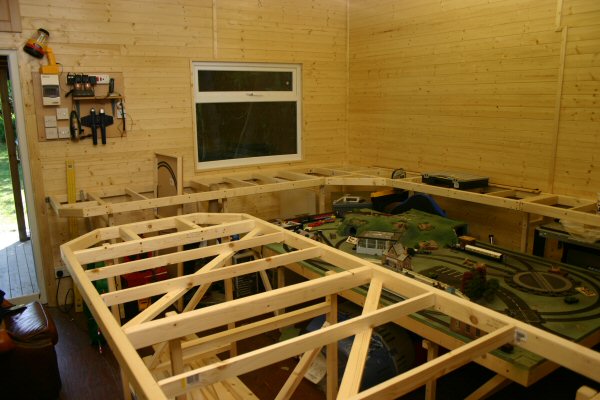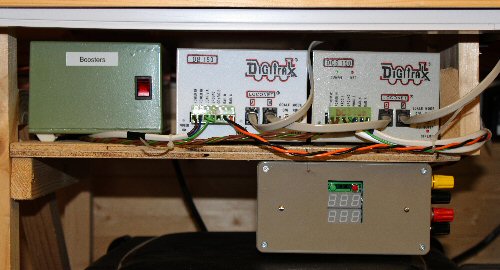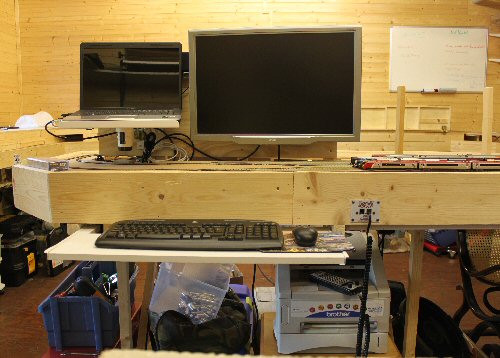This has been - and remains - an extended process. Once there was a robust design, I constructed the baseboards quite quickly. Track laying followed much more slowly and methodically, and the early wiring was even slower. Once I had a routine in place I was able to speed up, and the fiddle yard - technically the most complex section - was completed in a fortnight.
This section provides background to the "mechanical" side of the layout. There is nothing clever or original in the way this has been approached!

This section describes how DCC has been used to control the railway. This was not, really, a controversial decision. I'm a techie; the railway is new; and it is large requiring control of tens of track sections. DCC was an obvious choice to me; I recognise that it isn't right for everyone.
But DCC is just the beginning: there's a lot more to control of this railway than just DCC. The power is sectioned into zones, with power management - this means that a short in one area doesn't remove power everywhere (DCC can be a blunt instrument in that regard). The track has occupancy detection, so that "the system" knows what track sections have trains in them. The points are DCC controlled - that isn't terribly unusual nowadays. The signals are (or will be) fully automatically controlled: that means a signal will go red when a train drives past it with no human or computer intervention. If the track ahead is blocked by a point set against it - the signal is red. If the signal in front is red, the one behind is orange; again all with no intervention.
The thing that enables all of this to happen isn't DCC. DCC itself plays its part, but it is only a component of a successful system. The real enabler is the command bus and its accessories. This is a Digitrax system, with LocoNet as the command bus and accessories from CML Electronics. The combination makes a very powerful system!

Computer control isn't for everyone; equally for others it is a very important part of their model railway. This section describes how the "Traincontroller" software has been used to control the South Downs Railway.
Why did I want computer based control? Two reasons, I suppose. Firstly, I don't find driving model trains particularly inspiring. If I can press a button and have a train go from A to B, I'm happy. Secondly, the railway is too large for one person to control anything like all the activity that should be going on at any one time. Using a computerised control approach, the computer can drive some "background" traffic and can run trains to and from stations. A human operator still has work to do - for example splitting up goods trains, changing the loco on passenger trains at terminus stations and the like. The computer program allows a "tempo" of train operations to be maintained alongside the human involvement.
Computer control isn't a "take it or leave it" concept: there are lots of ways it can be used. They can be more intrusive or less intrusive way according to your wishes.
My railway is controlled from a PC located by the fiddle yard. I have a laptop plus a large monitor; this kit used to be expensive, but is far less so today. For those who want a less intrusive approach, it's entirely possible to use a sub £200 laptop with free software: so cost need not be a prohibitive barrier.

